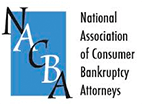10 Years After 2008 We Still Borrow More Than We Save

In 2008, the housing market collapsed. The Great Recession began as this collapse created a tsunami effect throughout the entire American economy. In an eerie and very similar parallel to what happened in the 1920s that caused the stock market to crash in October 1929 and led to the Great Depression, unemployment and home foreclosures soared.
10 Years After 2008 We Still Borrow More Than We Save
Ten years later, many people have still not recovered. Although unemployment is much lower statistically, what employment looks like has changed dramatically. The rise of the gig economy has shifted the way companies and employees view jobs and employment, and labor law experts are still trying to figure out if people are being paid a fair wage for the work they perform in these new industries.
So, what is the ultimate impact on our financial health and habits? One thing is for certain: as a society, we still borrow much more money than we save, if we save at all. Why are we still doing this? There are few identifiable factors including:
High Debt
While some Americans incur debts due to extravagant spending or unwise financial decisions, many others are borrowing just to stay afloat financially. Many people who are in deep debt report having savings at one time or another but have exhausted those accounts when hard times hit. Some individuals have even borrowed from their retirement accounts, and now have little to no cushion when a significant financial event strikes. Major car repairs or replacing a vehicle, medical bills or dental work, home repairs and other expenses can leave people with little choice but to borrow money and incur debt.
The burden of debt is immense for so many families across the U.S. Not only do many struggle just to make the minimum payment on the debts they’ve incurred, but they may also find that their debts only grow as the interest continues to accrue on the unpaid balances.
Inability to Save
Families across the country report that the high cost of essentials like food, clothing, and shelter take every bit of their income, leaving them unable to save for emergencies or unexpected expenses.
A survey by the Federal Reserve found that 35% of Americans would be unable to pay all their bills if faced with a $400 emergency. When a significant expense arises, they have no choice but to exhaust any savings they have, and even borrow more to make ends meet. For far too many people, it’s a vicious cycle that can be impossible to break.
Another reason for this lack of savings is because of habit. Some people argued that the 2008 financial crisis would teach Americans a lesson about debt versus savings. This seemed true for a while, as evidenced by a 2009 survey which found that 44% of consumers were trying to minimize their debt, as compare to just 38% the year before.
However, this trend has not seemed to last. After the crisis, expenses fell, which means that Americans had more money on their hands. Rather than placing this money into savings, their discretionary spending increased. For example, in early 2015 gas prices were a dollar lower than they had been the previous year, but people in a study ended up spending 80% of the money they saved on gas.
Indeed, the personal savings rate between the years 1960 and 1984 was always at least 8%. As of December 2017, however, it had dropped to 2.4%.
Higher Mortgages
After the mortgage meltdown of 2008, many financial institutions tightened their lending practices and charged higher interest rates on the housing loans they made. Additionally, many homeowners who were able to keep their homes took out additional mortgages to stay afloat financially. As a result, monthly mortgage payments have gone up, while income has either stayed the same or decreased.
A recent Pew report found that real average wages, which is income left after inflation adjustment, in the United States are at the same level they were in 1974. What that means is that purchasing power has stagnated for more than 40 years, while prices have kept increasing. A sobering example of this in the Pew report is that the $4.03 hourly wage in 1973 had the same purchasing power as a $23.68 hourly wage does now.
Credit Cards
The modern use of credit cards is another indication of the unhealthy relationship Americans have with debt and savings. This is especially true when it comes to secured credit cards, which are an option for people without good enough credit to open a traditional credit card, such as many millennials. Secured credit cards require users to put down a security deposit, a form of savings. However, very few people use secured credit cards, opting for more costly alternatives.
Is Bankruptcy an Option?
If you are burdened with debt, you are not alone. If you are struggling to pay your bills or if you are having to borrow money to pay them, bankruptcy could help you start over financially. There are several different kinds of bankruptcy options available to you, depending on the specifics of your financial situation. A bankruptcy lawyer can go over your particular situation and determine what the best course of action is in your case.
Contact an Experienced New York Bankruptcy Lawyer
If you are considering filing for bankruptcy, the Westchester County bankruptcy attorney at Michael H. Schwartz, P.C., can help. In the past 35 years, Mr. Schwartz has successfully eliminated millions of dollars of debt for his clients. He believes everyone should get a chance to start over without having to lose everything they’ve worked for in the process.
Michael H. Schwartz, P.C., is a debt-relief firm that is dedicated to helping people get back on their feet financially. We have been providing quality representation to consumers and business in Putnam, Westchester, and Rockland County, as well as the greater New York City area and the Hudson Valley, for more than 30 years.
Call us today by phone or online for a confidential consultation about all of the options that are available to get you back on solid financial ground.

Michael H. Schwartz is the largest filer of bankruptcy cases for people living in Westchester and Rockland counties in New York. A graduate of New York Law School, Michael has been licensed to practice in New York State courts since 1983. He is also licensed to practice in the U.S. Bankruptcy and District Courts for the Southern, Eastern and Northern Districts of New York and the District of New Jersey as well as the Second Circuit U.S. Court of Appeals. He is a graduate of Max Gardner’s Bankruptcy and Veterans’ Boot Camps. Several media outlets have reported on his cases or sought his insights, including The New York Times.





